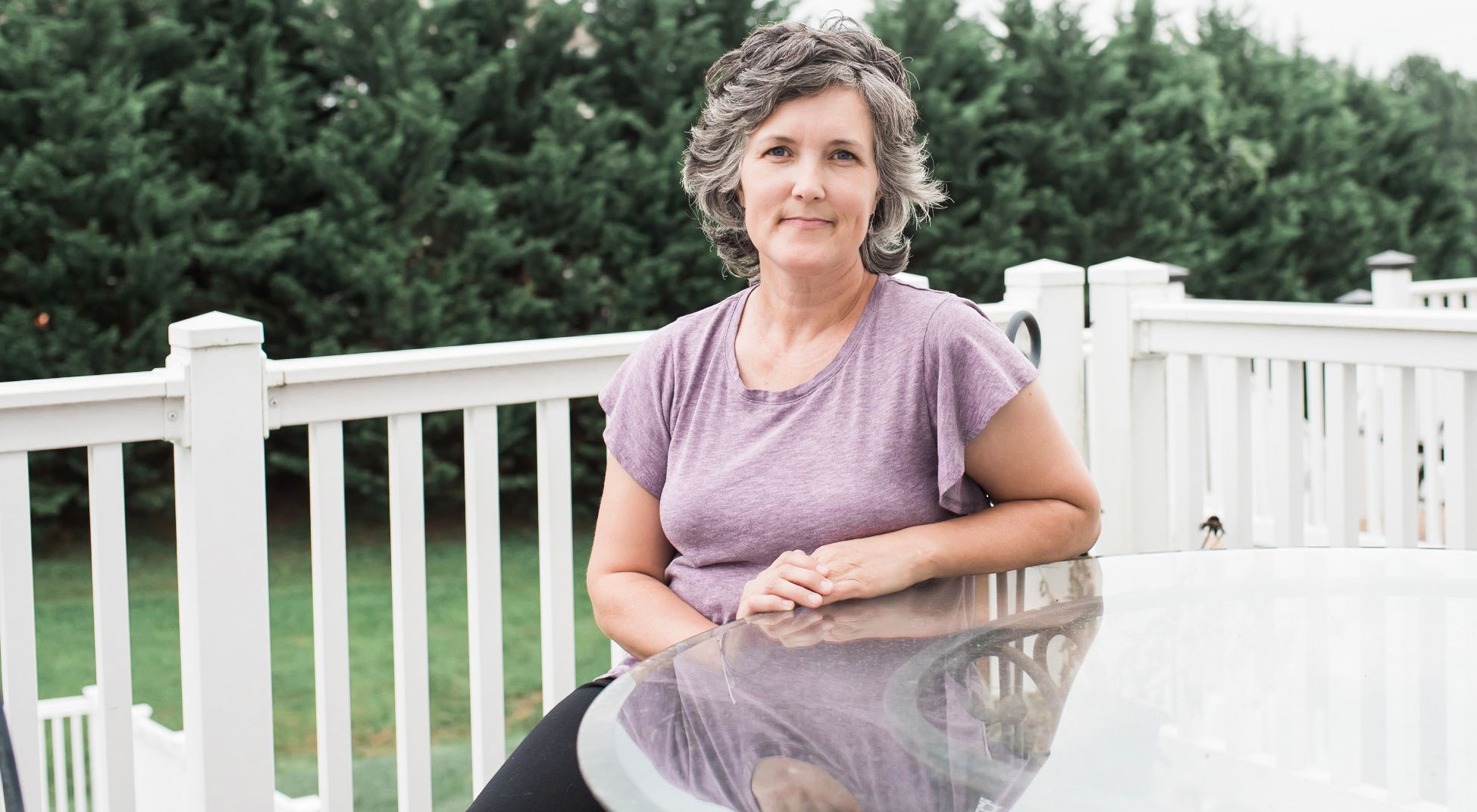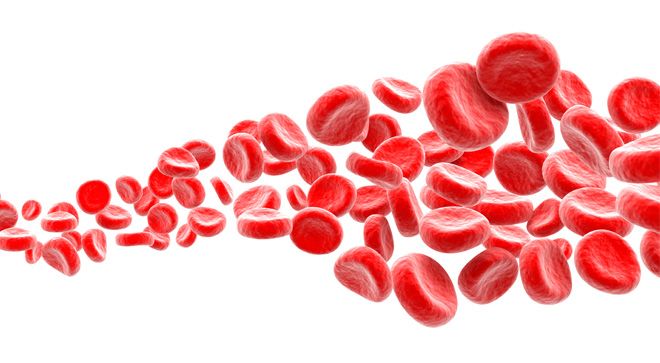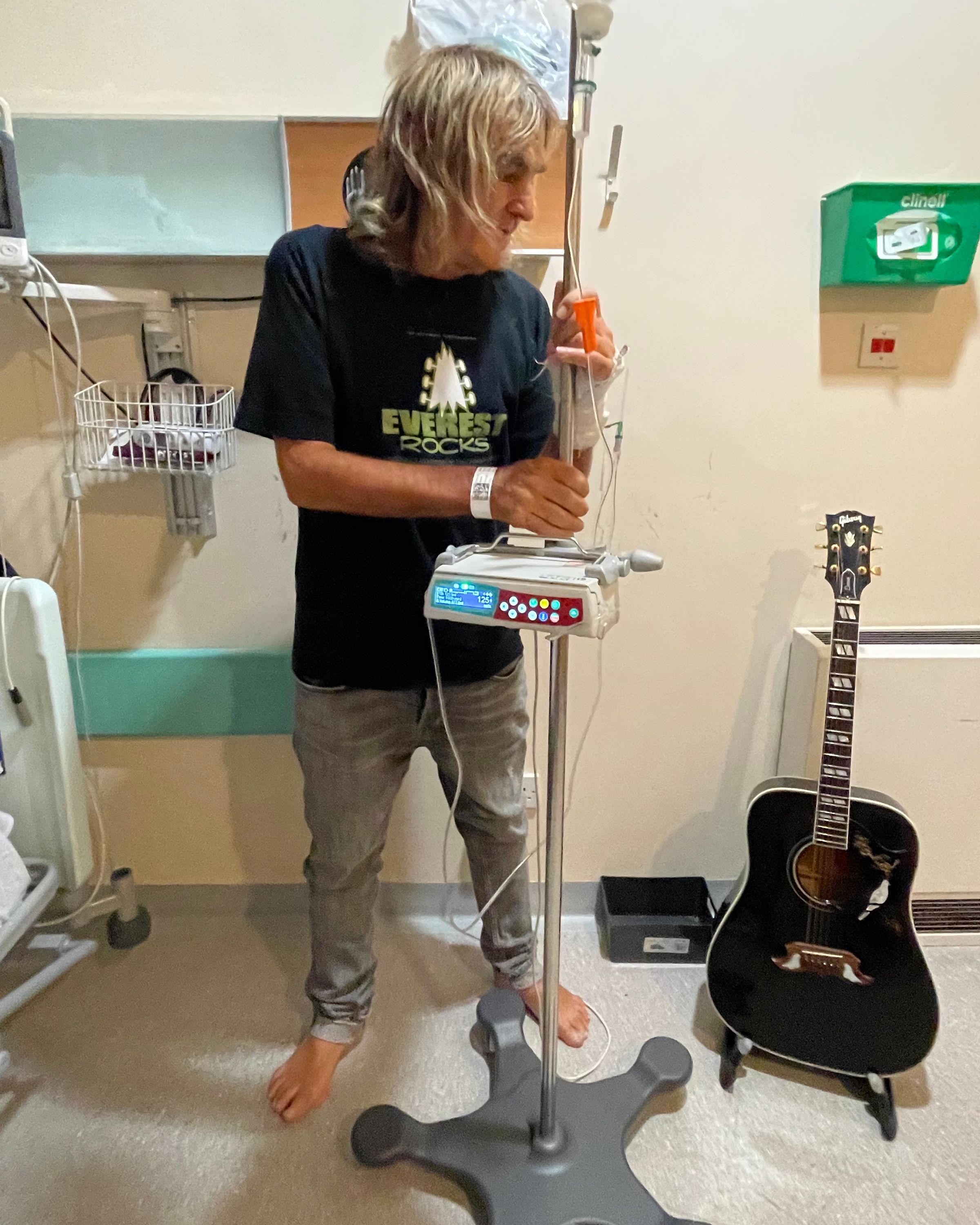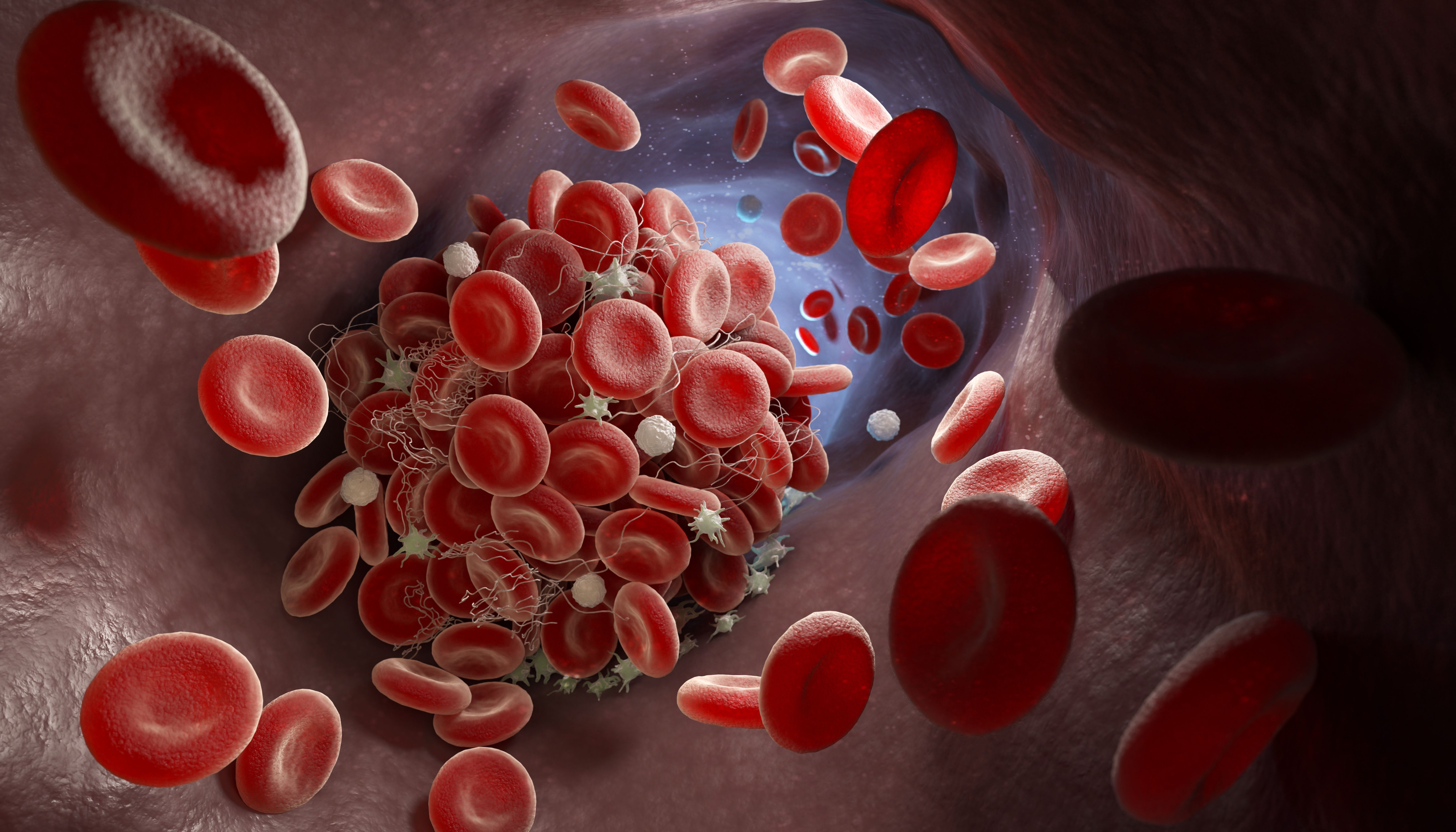Publication
Article
CURE
A Little of Everything: Exploring Strategies to Treat Non-Hodgkin Lymphoma
Author(s):
Targeted therapies, immunotherapies and combinations add new weapons to fight against non-Hodgkin lymphoma.
KELLY FURGASON's disease appeared first in her bones, which rarely occurs. - PHOTO BY CAYLIN MARIE PHOTOGRAPHY

KELLY FURGASON's disease appeared first in her bones, which rarely occurs. - PHOTO BY CAYLIN MARIE PHOTOGRAPHY
At age 40, Kelly Furgason developed a persistent limp. The problem arose during a stint as a zookeeper at a small facility for exotic animals in Harford County, Maryland, where she lives. “I was doing very physical work, cleaning and restraining animals,” she says. “I just thought, ‘I’m getting older, and my body’s telling me to slow down.’” But even after Furgason got cortisone shots and saw one specialist after another, her leg continued to bother her.
Over the next 18 months, as the limp became an all-over aching of the joints, Furgason saw nine doctors. Most believed that she had arthritis, but she wasn’t satisfied with that explanation. Eventually, she found herself in the office of a reputable orthopedist at the University of Maryland Medical Center in Baltimore, who assured her, “We’re going to figure out what’s wrong with you.”
“He ordered a PET scan,” she says, “and when I had that done, I lit up like a Christmas tree.” Before PET scans are done, patients receive a radioactive form of glucose through an intravenous (IV) injection. Because they are more active than normal cells, any existing tumors attract the glucose and “light up” on the scan.
By then, due to the severity of her pain, Furgason was using a wheelchair. X-rays showed hairline fractures in her femur and a rib. The doctor sent Furgason to Johns Hopkins Hospital in Baltimore for a bone marrow biopsy, and the results revealed that she had diffuse large B-cell lymphoma (DLBCL), an aggressive non-Hodgkin lymphoma, involving bone. “I had no idea that cancer was even on the table,” Furgason says. “I had a family history of breast and colon cancer, but I never imagined they’d say I had lymphoma.”
Because the cancer was in the bone marrow, it was considered stage 4. Although DLBCL is the most common type of non-Hodgkin lymphoma, it very rarely appears first in the bones. Still, Furgason’s prognosis was good.
“In other cancers — solid tumor cancers — we tend to think of stage 4 disease as incurable,” says Christopher Flowers, M.D., director of the Emory Lymphoma Program at Winship Cancer Institute of Emory University in Atlanta. “But that’s not true for diffuse large B-cell lymphoma or some of the other aggressive lymphomas. Even when it’s advanced stage, the goal of treatment is cure.”
Nearly 75,000 adults and children in the United States will get a diagnosis of some form of non-Hodgkin lymphoma this year. For the vast majority, the chance of cure or long-term remission is very high. For those who don’t respond to standard treatments or who relapse, many promising treatment options are in the pipeline, including targeted therapies, immunotherapies and new combinations of existing drugs.
A TALE OF TWO TYPES
“It is an exciting time in the field of lymphoma,” says Ann LaCasce, M.D., director of the Dana-Farber/Partners CancerCare Hematology-Medical Oncology Fellowship Program at Dana-Farber Cancer Institute in Boston. “Patients often live a very long time with (slow-growing) lymphomas or we cure many patients with aggressive lymphomas, but (the outlook) keeps getting better.”
Lymphoma is a cancer of the lymphocytes, a subset of white blood cells that fight certain types of infection. Lymphocytes travel in the lymphatic system, the blood, bone marrow and through the body. In Hodgkin lymphoma, mature B cells become cancerous and unusually large, with more than one nucleus. Enlarged lymph nodes are typically the first sign of disease. Non-Hodgkin lymphoma, on the other hand, can arise from B cells or T cells and first appear in lymph nodes or other organs, including the skin or bones.
REAPING THE BENEFITS
Non-Hodgkin lymphoma is not a single cancer but, rather, a broad category that includes more than 60 diagnoses. DLBCL, accounting for 1 in 3 cases of non-Hodgkin lymphoma, is the most common type, followed by follicular lymphoma and chronic lymphocytic leukemia/ small lymphocytic lymphoma. Other subtypes include marginal zone, mantle cell, peripheral T-cell, Burkitt, hairy cell and lymphoplasmacytic lymphoma. “The major challenge is that each type should be managed individually and a little bit differently,” Flowers says.
Nearly 90 percent of patients who have DLBCL respond to the standard of care, a combination of chemotherapy and immunotherapy drugs dubbed R-CHOP: Rituxan (rituximab) plus cyclophosphamide, Adriamycin (doxorubicin), vincristine and prednisone. Furgason received R-CHOP and reaped the benefits right away. “Within five to 10 days of receiving the first treatment, I was able to stand up and walk,” she recalls.
More than 60 percent of people go into complete remission after treatment, as Furgason did, but 35 to 40 percent relapse. A small minority — just over 10 percent — don’t respond at all.
People who have follicular lymphoma, which is typically very slow growing, or indolent, might not need treatment right away — if at all. If treatment is necessary, radiation is the preferred course for stage 1 and selected patients with stage 2 disease. Rituxan alone or in combination with chemotherapy is typically used for patients with more extensive disease.
Unlike DLBCL, follicular lymphoma is very difficult to cure except in patients with early-stage disease. However, it might be years before treatment is needed and, after it is completed, years before relapse occurs. “It has a long natural history where patients oftentimes live for many, many years,” says LaCasce. “The median survival is approaching 20 years.”
TREATING WITH A TARGET
Although Rituxan, approved for follicular lymphoma in 1997 and for DLBCL a few years later, represented a major advancement in lymphoma treatment, it doesn’t help everyone. “For patients with T-cell lymphomas that don’t have the marker (CD20, a cell surface protein expressed on B lymphocytes) that rituximab attacks, there’s still a dramatic need to change survival with new therapies,” says Flowers.
Of course, not everyone who is a candidate for R-CHOP responds to treatment. “There need to be approaches that are more targeted to select groups of patients who don’t do well with standard therapies,” Flowers says.
A current clinical trial, which includes people with DLBCL who are at high risk of relapse, compares R-CHOP with a regimen that replaces the chemotherapy drug vincristine with the targeted drug polatuzumab. In a previous study, 78 percent of patients had no sign of disease after completing treatment with this combination.
Polatuzumab attaches to CD79b, a protein found in high quantities on B cells, and delivers a chemotherapy drug directly into the tumor cells, causing cell death. “Other approaches look at targeted subgroups of diffuse large B-cell lymphoma and add targeted agents such as Imbruvica (ibrutinib) or Revlimid (lenalidomide) to see if that improves outcomes,” Flowers says. Imbruvica binds to and blocks Bruton tyrosine kinase, a growth-signaling protein that promotes B-cell cancers. Revlimid is a chemotherapy already used in multiple myeloma and mantle cell lymphoma.
In mantle cell lymphoma, a less common and more aggressive subtype, a recent small study found that Imbruvica and Venclexta (venetoclax) produced better results together than either drug used alone. Venclexta, a targeted therapy already approved by the Food and Drug Administration (FDA) for chronic lymphocytic leukemia, blocks a protein called BCL-2, which can otherwise prevent cancer cells from dying in lymphoma. About 20 percent of people who use just one of these drugs show no signs of disease after treatment.
When the drugs are combined, 42 percent of people treated go on to have no signs of disease.
“There (are) some very interesting-looking complete remissions that you wouldn’t necessarily expect with just the ibrutinib alone,” says LaCasce, “so, we are hopeful about some of these new drug combinations.”
SHIFTING TO CAR-T CELLS
Other targeted drugs show promise in relapsed non-Hodgkin lymphoma. In an early phase trial, when combined with Rituxan, the drug 5F9 (Hu5F9-G4) brought about complete remission in 36 percent of patients with relapsed DLBCL or follicular lymphoma. 5F9 blocks CD47, a protein that promotes the spread of lymphoma. The drug interacts with cancer cells and macrophages — immune cells that consume harmful or threatening cells. Cancer cells, which are masters at escaping the immune system’s built-in defense mechanisms, thwart macrophages by giving off a tailored “don’t eat me” signal. 5F9 blocks this signal so that macrophages can destroy the cancer cells. The FDA has granted 5F9 fast-track designation to treat relapsed or refractory — meaning it does not respond to standard treatments — DLBCL and follicular lymphoma.
Among the DLBCLs that don’t respond as well to R-CHOP are double-protein-expression and double-hit DLBCLs. “In the past, when people relapsed and didn’t respond to second-line chemotherapy, we had a very, very difficult time treating them,” LaCasce says. “Now we are seeing remarkable results with CAR-T cells.”
Because cancer cells are expert at evading the immune system, chimeric antigen receptor (CAR)-T cell therapy — a type of immunotherapy — involves reengineering T cells to outsmart cancer cells. T cells are removed from the body, genetically modified and cultivated outside the body to fight certain types of cancer, and then reinfused to the body to attack the disease. Two types of CAR-T cell therapies have FDA approval to treat non-Hodgkin lymphoma.
Yescarta (axicabtagene ciloleucel) is approved for aggressive, relapsed and/or refractory DLBCL; primary mediastinal B-cell lymphoma; and once indolent follicular lymphomas that transform into aggressive disease. In clinical trials, 82 percent of people responded to Yescarta, 54 percent went on to show no further signs of cancer, and 40 percent remained in remission after 15 months.
Kymriah (tisagenlecleucel) is approved for relapsed or refractory DLBCL, high-grade B-cell lymphoma and DLBCL arising from follicular lymphoma. In clinical trials, 53 percent of participants responded to treatment, with 40 percent going on to show no signs of cancer. Their responses continued after 14 months. Kymriah is also approved for patients up to age 25 with relapsed or refractory B-cell acute lymphoblastic leukemia. “These are patients for whom we previously had no good treatment options,” LaCasce says, “so this is a huge advance in the field.”
Researchers are now studying the effects of CAR-T cell therapy in mantle cell, marginal zone, lymphoplasmacytic, angioimmunoblastic T-cell and anaplastic large cell lymphomas.
“Lymphomas, because they are part of the immune system, are actually exquisitely sensitive to activation of the immune system to attack the cancer, and this is a revolutionary form of immunotherapy that does that,” Flowers says.
Although CAR-T cell therapy has dramatically improved the prognosis for many people facing non-Hodgkin lymphoma, the treatment has risks that can be lifethreatening. Once CAR-T cells are placed back in the body via IV infusion, they begin to multiply, and the recipient can develop a dangerously high fever and low blood pressure, known as cytokine release syndrome, or a “cytokine storm.”
The therapy can produce brain changes that cause confusion, seizures and severe headaches. In some cases, patients develop serious infections, low blood cell counts and a weakened immune system. As scientists actively explore and develop new ways to control CAR-T cells after infusion, doctors are learning how to manage these risks.
The greatest likelihood of dangerous side effects seems to be in people with the highest disease burden. “So, the question is, when is it best to use CAR-T cells?” LaCasce says. “When patients have minimal residual disease? Are there ways to combine CAR-T cells with other therapies to make them more effective for the 50 to 60 percent who don’t respond? This is an area under very active investigation.”
Although the prognosis for people with non-Hodgkin lymphoma continues to improve, the critical need is for increasingly personalized treatments. That means answering questions, such as when to treat indolent disease, when to use CAR-T cell therapy, who will respond to standard treatments and who is most likely to relapse.
“Hopefully, over time, we’ll better understand the biology, mutations and pathways in a patient’s disease so that we’ll know which patients will benefit from which therapies,” LaCasce says.






